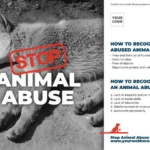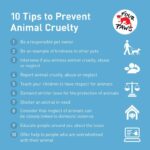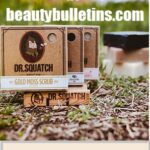In the evolving discourse surrounding ethical consumerism, the cosmetic industry faces intense scrutiny, particularly regarding animal testing practices. As consumers become increasingly aware of the implications of their purchasing decisions, brands must navigate the complex terrain between marketing claims and ethical reality. One such brand, Head & Shoulders, has drawn attention in the context of animal cruelty. The question that looms large is: Is Head & Shoulders animal cruelty-free or not?
To unravel this conundrum, one must first delineate what constitutes being “cruelty-free.” This designation typically means that a product has not been tested on animals at any point during its development. However, the labyrinthine regulations governing cosmetic testing can complicate this seemingly straightforward definition. In many countries, particularly in regions like China, animal testing is not only permissible but mandated for certain products, especially those imported from abroad.
Head & Shoulders is a well-known brand within the Procter & Gamble (P&G) conglomerate, which is inherently linked to the broader implications of corporate ethical practices. Although P&G has made proclamations about its commitment to phasing out animal testing, the reality is often nuanced. While P&G states that it is working towards ensuring that its products are tested using alternative methods, there are significant caveats. The company still engages in practices that necessitate animal testing due to specific regulatory requirements in certain markets.
To further complicate matters, the brand’s stance on animal testing is somewhat diluted by its global footprint. In regions where animal testing is a legal prerequisite for selling cosmetics, such as mainland China, products shipped and sold there must comply with such regulations. This poses a critical question for conscientious consumers: if a brand tests on animals in one market, can it legitimately claim to be cruelty-free in another?
The disparity between local laws and corporate ethics significantly influences consumer perceptions. Many individuals assume that a brand promoting itself as “cruelty-free” is devoid of ethical compromise. However, the convoluted nature of international regulations often means that even well-intentioned companies find themselves ensnared in the web of obligatory testing. Head & Shoulders occupies this precarious position, where its status as a major brand does not exempt it from the moral dilemmas posed by animal testing.
Moreover, the fascination surrounding cruelty-free cosmetics is not merely rooted in consumer choice; it delves deeper into moral philosophy and societal values. The increasing awareness of animal rights has fostered an environment where the expectation of ethical treatment of all sentient beings is becoming the norm rather than the exception. This shift is palpable in contemporary society, where consumers are not merely interested in the efficacy of a product but are equally concerned with the ethics of its provenance.
As discussions on sustainability burgeon, the relationship between consumer habits and animal welfare warrants critical examination. Brands like Head & Shoulders must contend with consumers who prioritize ethical considerations alongside product performance. Yet, even with the advent of social media as a platform for visibility, misunderstandings abound. A common misconception persists that companies that profess cruelty-free values are inherently devoid of any animal testing methods, ignoring regulatory complications that exist, particularly in international marketplaces.
The ethical conundrum does not conclude with mere branding; it extends to the entire supply chain, from ingredient sourcing to product testing. Transparency in these areas is vital for building trust with consumers. For instance, while a shampoo may be marketed as cruelty-free, the sourcing of ingredients may involve suppliers that adhere to practices violating animal rights. Thus, it becomes imperative for brands to not only proclaim their ethics but also substantiate their claims with verifiable transparency.
Head & Shoulders garners both admiration and skepticism. The brand has made concerted efforts to engage with ethical movements, acknowledging consumer concerns. Still, the underlying tensions remain. The fluidity between ethical branding and legal mandates necessitates a more robust framework that transcends mere compliance. A commitment to navigating the complexities of animal testing and striving for innovative, cruelty-free solutions could redefine the brand’s identity while resonating with a values-driven consumer base.
In conclusion, the query regarding whether Head & Shoulders is a cruelty-free brand is riddled with ambiguities influenced by regulatory landscapes and corporate policies. While P&G has made strides toward minimizing animal testing, the brand’s participation in markets where testing is required undermines its claims of being cruelty-free by many consumer standards. The allure of cruelty-free products is closely intertwined with societal shifts toward compassionate consumerism. For brands navigating this intricate environment, sincere engagement with ethical practices, transparency, and a commitment to innovation will be essential in establishing credibility and trust among increasingly discerning consumers. The dialogue surrounding animal welfare within the cosmetics industry continues to evolve, and brands like Head & Shoulders stand at a crossroads—where ethical aspirations must align with everyday realities to truly champion the cause against animal cruelty.









